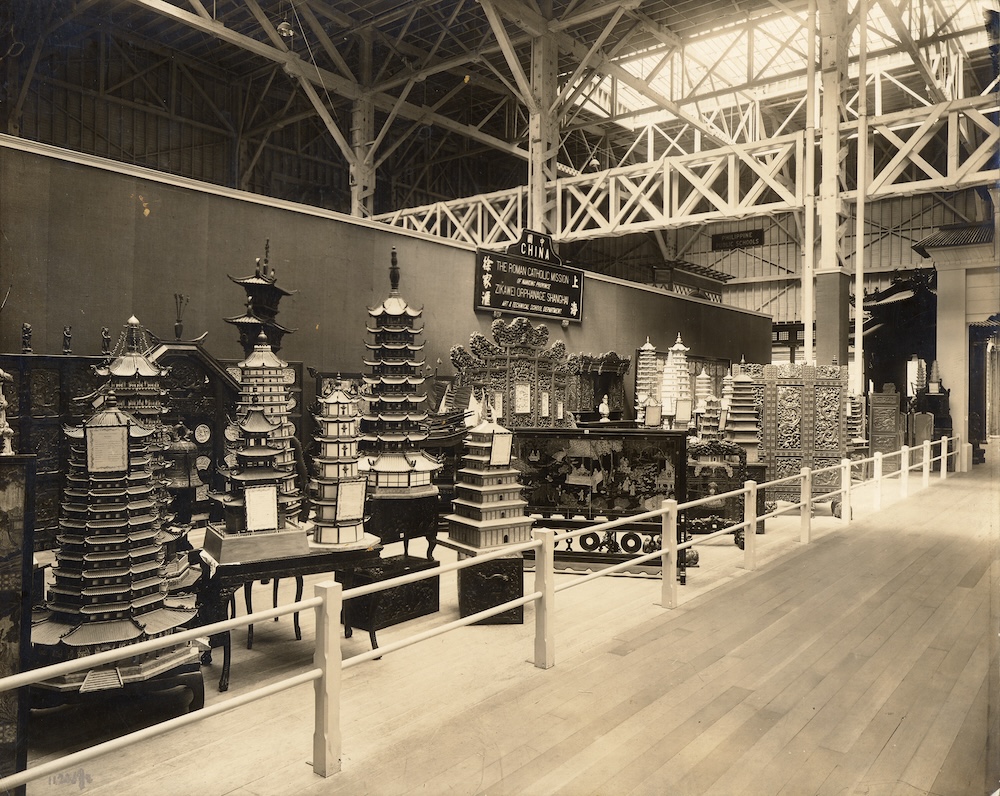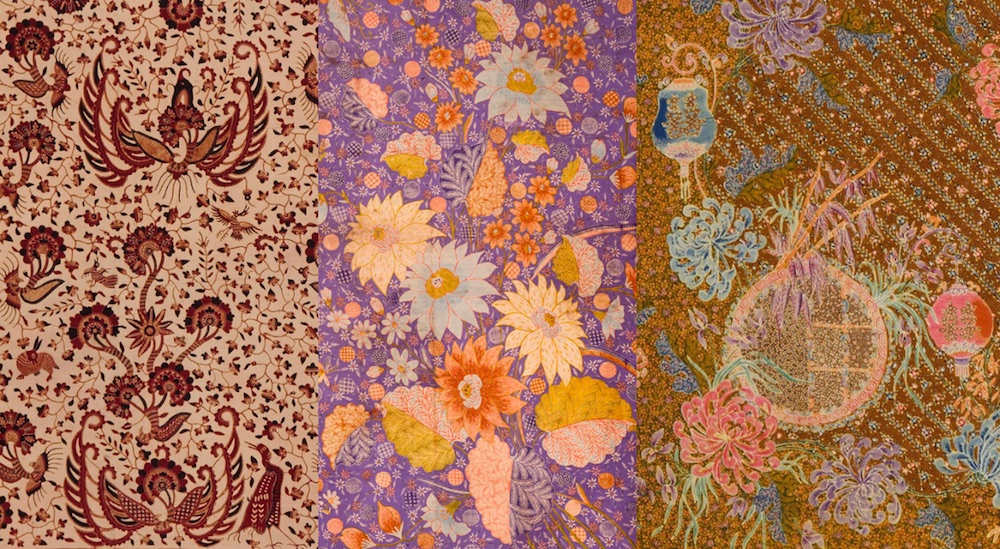This large barrel-shaped 'fahua' garden seat is covered in blue and turquoise glazes. The double walls are elaborately decorated with pierced, carved openwork. The central section has two large moulded lion mask handles and cloud motifs set against the openwork floral background enclosed within the studded bands. The term fahua refers to alkaline-glazed earthenwares with striking decorations in deep blue, turquoise, purple, green, yellow and white colours. Produced from the 14th century onwards, fahua glazes became popular in Shanxi province in the north during the mid-15th century and spread to south China, at Jingdezhen. In fahua ware, a technique called slip-trailing is used before the application of the glazes. Designs are outlined by trails of slip (liquid clay) from a tube connected to a bag of slip paste then filled in with yellow, green and purple glazes applied within raised boundaries of background and designs before firing. As a result of these raised outlines, fahua wares have often been thought of as the ceramic version of the Chinese cloisonné.Fahua-type glazes were used to ornament a wide range of vessel types during the middle of the Ming dynasty including garden seats like this piece, wine jars, heavy flower pots and vases.




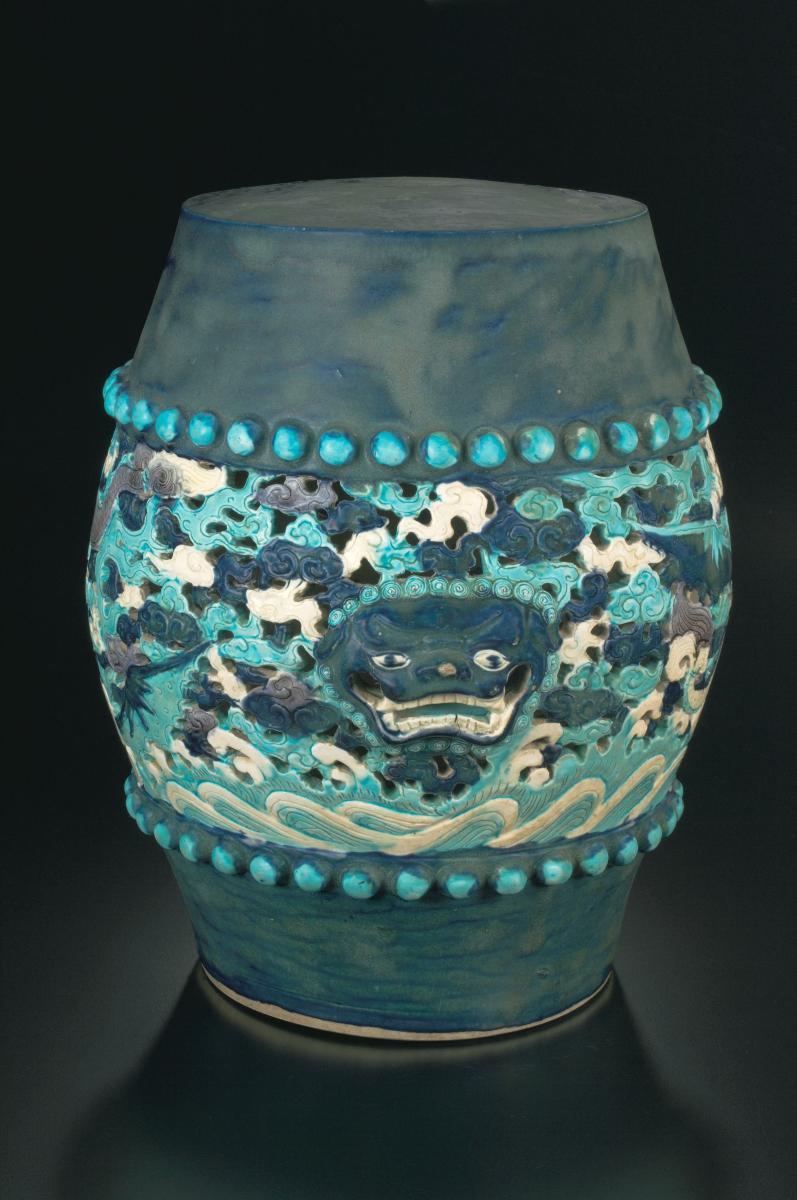

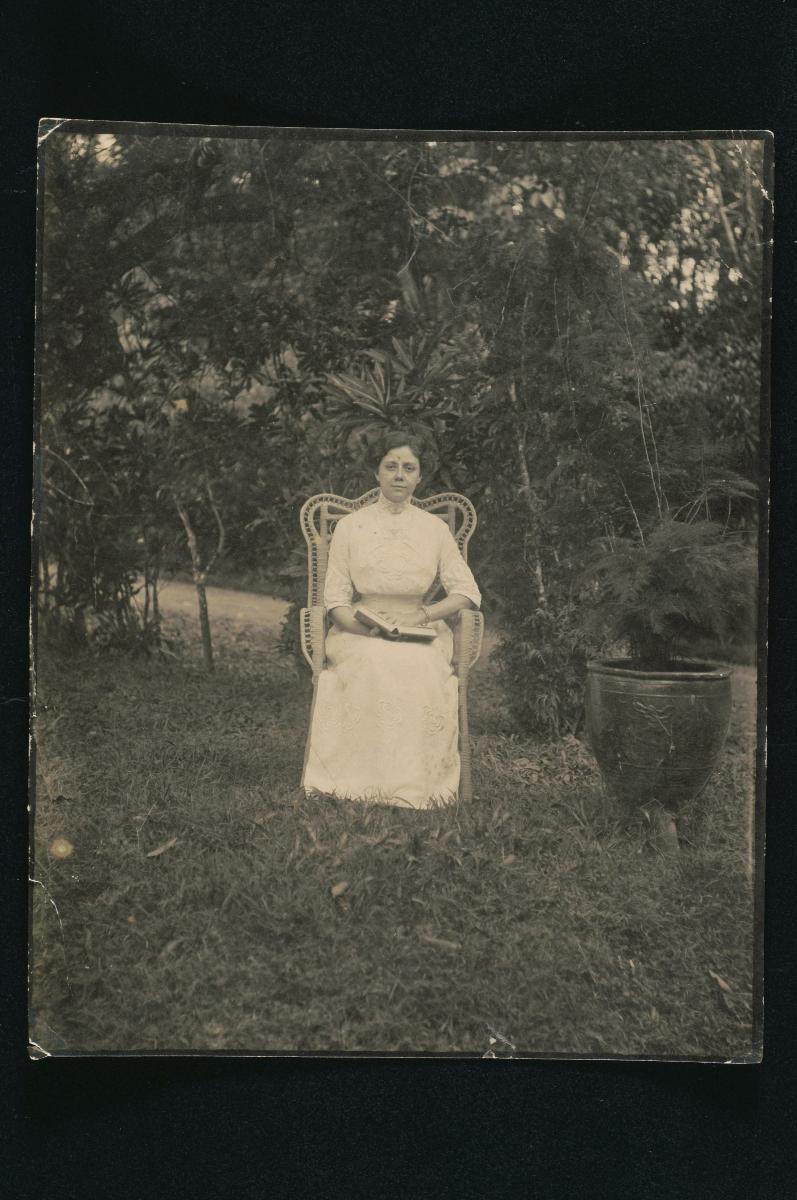


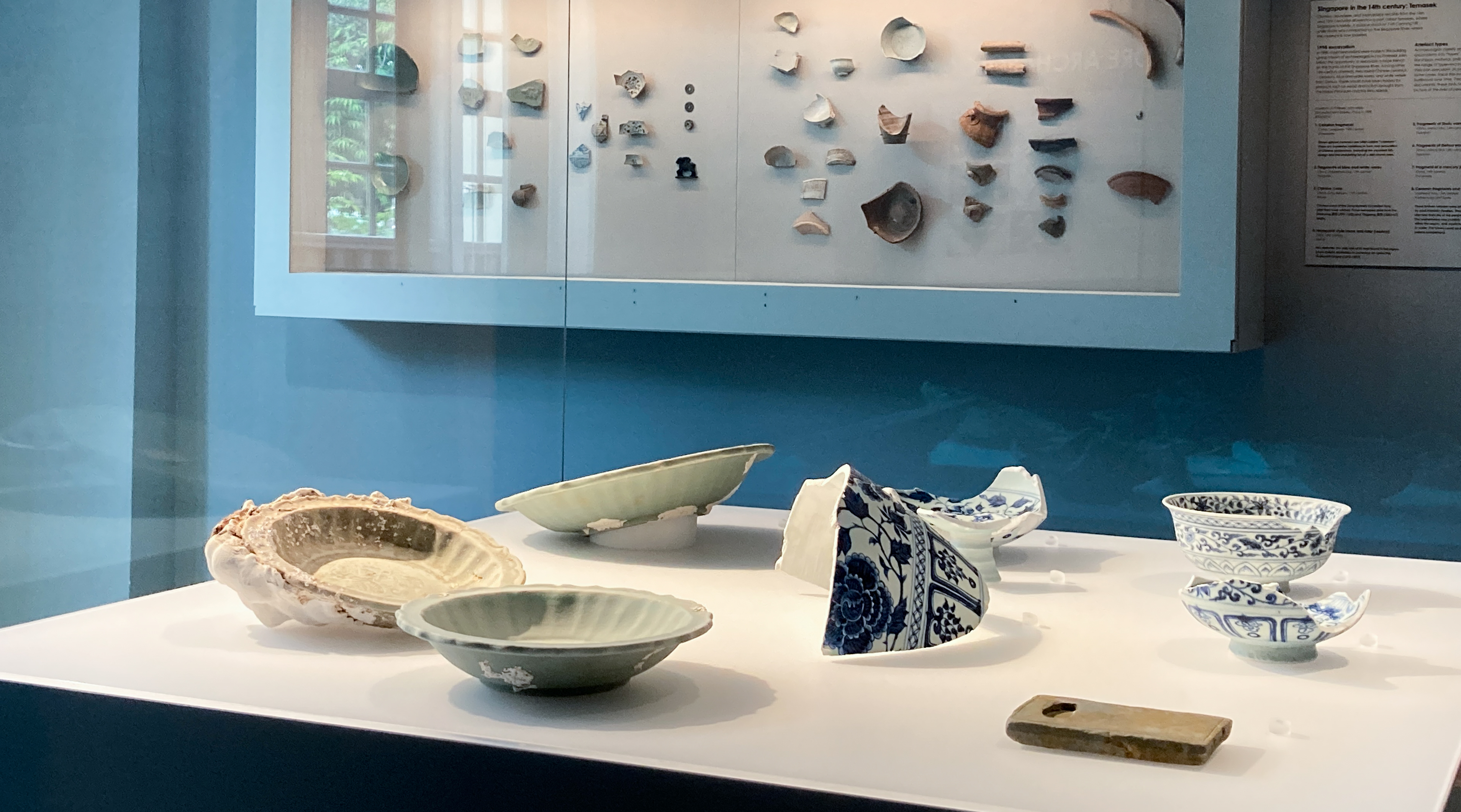

.ashx)


